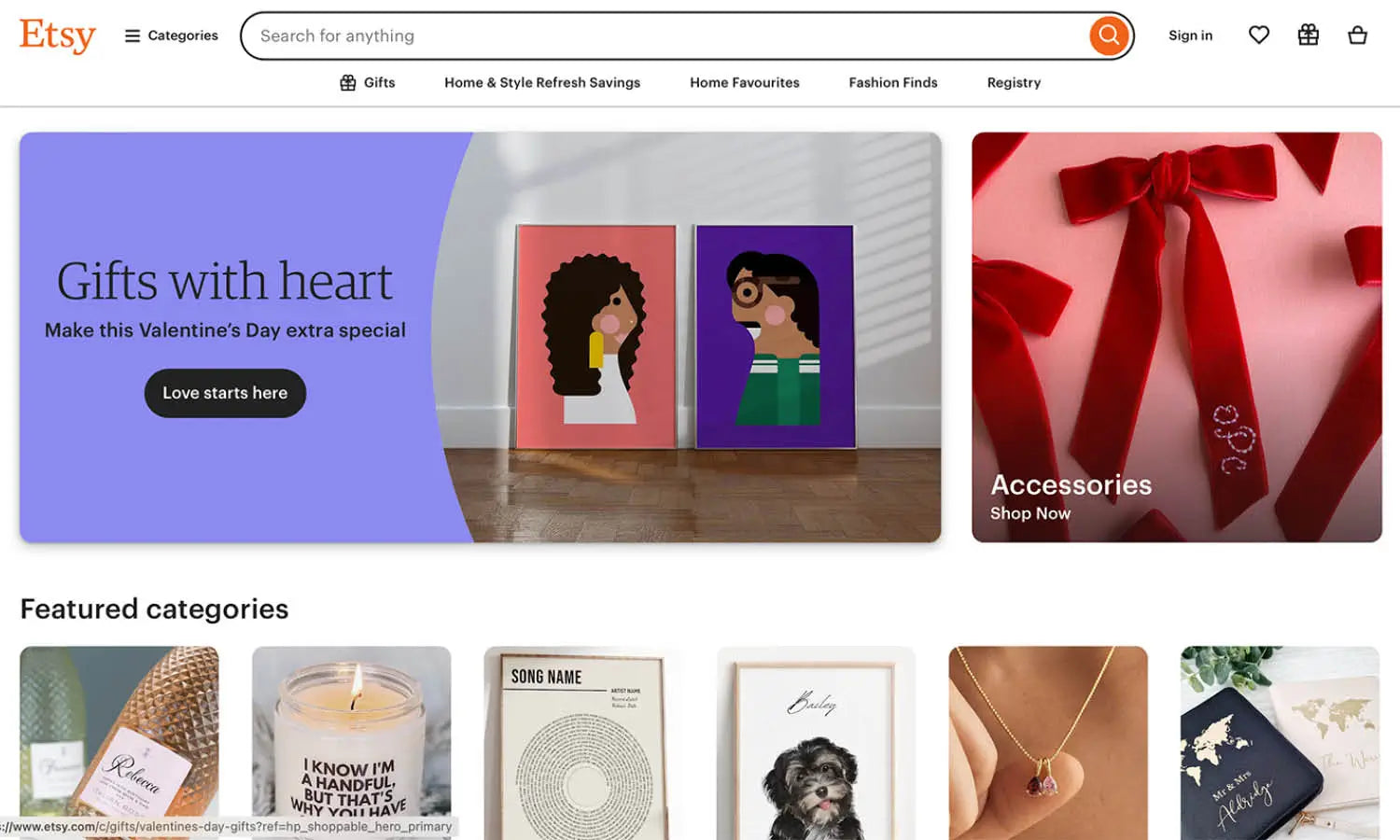Start Selling Your Logo Designs Online & Earn More Income

For logo designers, the online marketplace offers a vast arena to showcase their talent and generate significant income. Whether you are a seasoned designer or just starting, understanding how to effectively sell your logo designs online can transform your passion into a profitable venture. This guide aims to equip you with strategic insights and practical tips to successfully market your logo designs. By leveraging online platforms, you can reach a global audience, connect with potential clients, and establish a strong digital presence.
Embrace the digital marketplace to expand your reach, enhance your professional network, and boost your income through strategic online sales. Let's delve into how you can optimize your approach to selling logo designs online and turn your creative prowess into financial success.
Create a Diverse Portfolio
A diverse portfolio is essential for any logo designer looking to sell their work online and boost their income. It acts as your professional showcase, demonstrating your versatility and skill in creating unique and compelling logo designs. Start by including a variety of styles, such as minimalist, vintage, and modern, to appeal to different tastes and industries. This variety not only displays your flexibility but also widens your appeal to a broader client base.
Incorporate case studies and before-and-after transformations to provide context and depth to your designs. These elements highlight your problem-solving skills and the value you bring to a brand. Additionally, make sure your portfolio is accessible and easy to navigate with high-quality images of your logos. An online portfolio optimized for mobile devices ensures that potential clients can view your work from any platform.
Regularly update your portfolio to include your latest and most successful projects. This showcases your ongoing commitment to excellence and staying current with design trends. Remember, your portfolio is the cornerstone of selling your logo designs online—it not only reflects your artistic capabilities but also your professionalism and dedication to your craft.
Choose the Right Platforms
Choosing the right platforms is crucial for selling logo designs online effectively and increasing your income. Start by identifying online marketplaces that cater specifically to graphic designers and creatives, such as 99designs, Behance, and Dribbble. These platforms are visited by thousands of potential clients daily and offer a great opportunity to get your work noticed.
When selecting a platform, consider the audience it attracts and the nature of the engagements it supports. For example, 99designs is ideal for designers who thrive in a competitive environment through design contests, while Behance is suited for showcasing detailed portfolios and connecting directly with clients. Additionally, consider using Etsy for selling ready-made logos or templates as it attracts small businesses looking for cost-effective design solutions.
It’s also beneficial to leverage professional social media platforms like LinkedIn to promote your services and connect with businesses that might require logo design. Regular posting and networking on these platforms can increase your visibility and lead to direct commission work.
Incorporate customer reviews and feedback on these platforms to build trust and credibility. A strong presence on the right platforms can significantly enhance your online visibility, helping you attract more clients and thereby increase your income from selling logo designs online.
Set Up a Professional Online Portfolio
Creating a professional online portfolio is a pivotal step for any logo designer aiming to sell their work and generate income online. Your portfolio not only showcases your design skills but also serves as the primary tool for clients to assess your capabilities and fit for their projects.
Begin with a clean, user-friendly website design that emphasizes your work while providing an easy navigation experience for visitors. Include a variety of projects in your portfolio to demonstrate your versatility across different styles and industries. High-quality images of your logos are essential; they should be displayed prominently and include brief descriptions or case studies that explain the concepts and execution behind each design.
Ensure your portfolio website is optimized for all devices, particularly mobiles, as many clients will access your site on the go. Speed and responsiveness are crucial to keeping potential clients engaged.
Include a professional biography and a clear, concise contact page with multiple ways to reach you, such as an email address, a contact form, and links to your professional social media profiles. This accessibility makes it easier for potential clients to inquire about your services.

Leverage Social Media
Leveraging social media is essential for logo designers looking to sell their designs and boost their online income. Platforms like Instagram, Pinterest, LinkedIn, and Facebook provide powerful tools to showcase your work, connect with potential clients, and build a brand presence.
Start by creating dedicated professional accounts on these platforms, focusing on those where your target audience is most active. Instagram and Pinterest are particularly effective for visual content, making them ideal for displaying logo designs. Use high-quality images of your logos, and include engaging captions that tell the story behind each design or the process involved.
Regular posts and updates keep your audience engaged and help maintain your visibility in a crowded market. Utilize hashtags strategically to reach a broader audience, particularly those searching for specific design services like logo design. For instance, hashtags such as #LogoDesign, #GraphicDesign, and #CreativeDesign can increase your posts' visibility.
Engage with your followers by responding to comments and messages. This interaction not only builds relationships but also encourages others to share your work and recommend your services. Additionally, consider collaborations with influencers or other designers, which can expand your reach and bring new clients.
Use analytics tools provided by these platforms to track your performance and understand what content works best. This insight allows you to refine your strategy, focusing more on successful types of posts that drive engagement and potential business.
Offer Customizable Packages
To enhance your income and appeal to a wider range of clients when selling logo designs online, offering customizable packages is a strategic approach. This method allows clients to select a service package that best fits their needs and budget, increasing customer satisfaction and your potential sales.
Begin by structuring your packages into tiers, such as Basic, Standard, and Premium. Each tier should clearly outline what the client will receive, with the complexity and exclusivity of the logo design increasing with each level. For example, a Basic package might include a simple logo with two revisions, while a Premium package could offer a comprehensive branding suite with multiple revisions and brand collateral.
In each package, detail the deliverables, such as the number of initial concepts, rounds of revisions, file types provided, and any additional services like brand guidelines or social media graphics. Transparency in what each package offers helps clients make informed decisions and sets clear expectations.
Moreover, consider including an option for completely custom solutions, where the price is determined based on the client’s specific requirements. This flexibility can attract larger businesses or those needing a more in-depth approach to branding.
By offering tiered packages, you not only cater to different budget levels but also streamline your workflow, as clients choose a package that corresponds to a specific service level, making it easier for you to manage and execute projects.
Implement an Effective Pricing Strategy
Implementing an effective pricing strategy is vital for selling logo designs online and generating a sustainable income. Your pricing should reflect the quality of your work, the effort involved, and the value you provide to your clients while remaining competitive within the market.
Start by researching the pricing landscape for logo design within your industry. Understand what both freelancers and agencies are charging and how they structure their pricing. This research will help you find a sweet spot for your rates that attracts clients while ensuring you are fairly compensated.
Consider adopting a value-based pricing model where the price is determined by the perceived value of the logo to the client’s business. This approach can lead to higher earnings than simply charging by the hour or a flat fee, especially if you can demonstrate how a well-designed logo enhances brand recognition and customer recall.
Be transparent with your pricing by clearly listing your rates on your website or in your promotional materials. This openness helps build trust with potential clients as they can see upfront what they can expect to pay without needing to negotiate or inquire deeply.
Be flexible with your pricing when necessary. Offering discounts for repeat clients or bundled services can foster long-term relationships and lead to more consistent work. Additionally, adjust your rates as you gain more experience and as the market evolves to ensure your pricing remains competitive and reflects your growing expertise and reputation in logo design.
Focus on Branding Yourself
As a logo designer aiming to sell your designs and increase your income online, it's essential to focus on branding yourself effectively. Your personal brand represents your unique style, approach, and values, distinguishing you from competitors and helping attract the right clients.
Begin by defining what sets you apart from other designers. This could be your design style, specialized industry experience, or a unique design process. Articulate this unique selling proposition clearly in all your marketing materials and on your website.
Your logo and website design should reflect your branding. They are often the first point of contact with potential clients, so ensure they convey professionalism and the essence of your personal brand. Consistency across all your platforms, from your website to your social media profiles, reinforces your brand identity.
Content marketing can also play a significant role in branding. Share insights about logo design through blog posts, videos, or social media content. This not only showcases your expertise but also helps you connect with your audience on a deeper level.
Engage regularly with your followers and clients through social media and email newsletters. Show appreciation for their support, respond to comments, and share behind-the-scenes content to create a more personal connection.
Focusing on branding yourself effectively increases your visibility and makes it easier for clients to understand and trust what you offer, leading to more sales and a stronger online presence.

Use Client Testimonials
Using client testimonials is a powerful way to build trust and credibility when selling logo designs online. Testimonials serve as social proof that can significantly influence potential clients' decisions by showcasing the experiences and satisfaction of past clients.
Start by asking satisfied clients if they would be willing to provide a testimonial. Most happy clients are usually willing to help, especially if they were pleased with your work and the service they received. These testimonials should ideally highlight specific aspects of your service that you want to promote, such as creativity, responsiveness, or professionalism.
Include these testimonials prominently on your website, preferably on the homepage and the sales pages for your services. This positioning ensures that visitors see positive feedback immediately, reinforcing the quality of your work and the value you provide.
For greater impact, ask for permission to include the client's name, position, and company. This adds authenticity to the testimonial. If possible, accompany the testimonial with a photo of the client or their company logo. This visual element makes the testimonial more relatable and real to prospective customers.
Additionally, consider using video testimonials, which can be more engaging than text alone. A client speaking about their positive experience with your services can be extremely compelling and help persuade others to choose you for their logo design needs.
Incorporating client testimonials into your marketing strategy can enhance your credibility, attract new clients, and ultimately increase your online income from selling logo designs.
Stay Updated with Industry Trends
In the dynamic field of logo design, staying updated with industry trends is crucial for maintaining relevance and enhancing your ability to sell designs online. Being well-informed enables you to anticipate market demands and adapt your designs to meet the latest preferences, which can significantly impact your income.
To stay on the cutting edge, regularly follow reputable design blogs, magazines, and websites such as Smashing Magazine, Logo Lounge, and Behance. These resources provide valuable insights into emerging design techniques, popular styles, and innovative branding strategies.
Participating in webinars, workshops, and design conferences can also help you stay informed and get inspired. These events are not only educational but also offer a chance to observe what top designers are creating and discussing.
Social media platforms like Instagram and Pinterest are great tools for keeping up with design trends. Follow industry leaders and influencers to see daily updates and explorations in logo design. This constant exposure can spark new ideas and keep your creative juices flowing.
Incorporate what you learn into your design practice. Experiment with new styles and techniques to keep your work fresh and appealing. This adaptability can make your portfolio stand out to potential clients searching for cutting-edge logo designs.
By staying informed and continuously evolving with the industry, you can ensure that your logo designs remain competitive and appealing, ultimately helping to increase your online sales and income.
Network with Other Designers
Networking with other designers is a vital strategy for any logo designer looking to increase their sales and income online. Building relationships within the design community can lead to collaboration opportunities, referrals, and valuable exchanges of ideas and techniques that enhance your work.
Start by joining local and online design communities such as AIGA, the Graphic Artists Guild, or online forums and groups on platforms like LinkedIn and Facebook. Participation in these communities can provide support, advice, and feedback on your designs, which is invaluable for growth and improvement.
Attend design meetups, conferences, and workshops where you can connect with peers and industry leaders. These gatherings are excellent opportunities to share your work, get new ideas, and learn from the experiences of others in your field.
Collaborate on projects when possible. Working with other designers can lead to new learning opportunities and can help you tackle larger, more complex projects than you might on your own, increasing your marketability and potential income.
Don’t just focus on taking; give back to the community by sharing your knowledge and experiences. Posting helpful content, giving talks, or mentoring less experienced designers can enhance your reputation and establish you as a thought leader in your field.
Effective networking builds lasting relationships that can prove essential for a sustainable and lucrative career in logo design. By connecting with other designers, you not only enhance your skills and exposure but also open up new avenues for selling your designs and increasing your income online.
Conclusion
Embracing the digital landscape to sell your logo designs can significantly boost your income and expand your professional reach. By focusing on building a diverse portfolio, choosing the right online platforms, and consistently branding yourself, you can attract a wide range of clients. Staying updated with industry trends and networking with other designers are also key to enhancing your skills and visibility. Implement these strategies to transform your passion for logo design into a profitable online business, ensuring you remain competitive and successful in the ever-evolving world of digital design.
Let Us Know What You Think!
Every information you read here are written and curated by Kreafolk's team, carefully pieced together with our creative community in mind. Did you enjoy our contents? Leave a comment below and share your thoughts. Cheers to more creative articles and inspirations!
















Leave a Comment